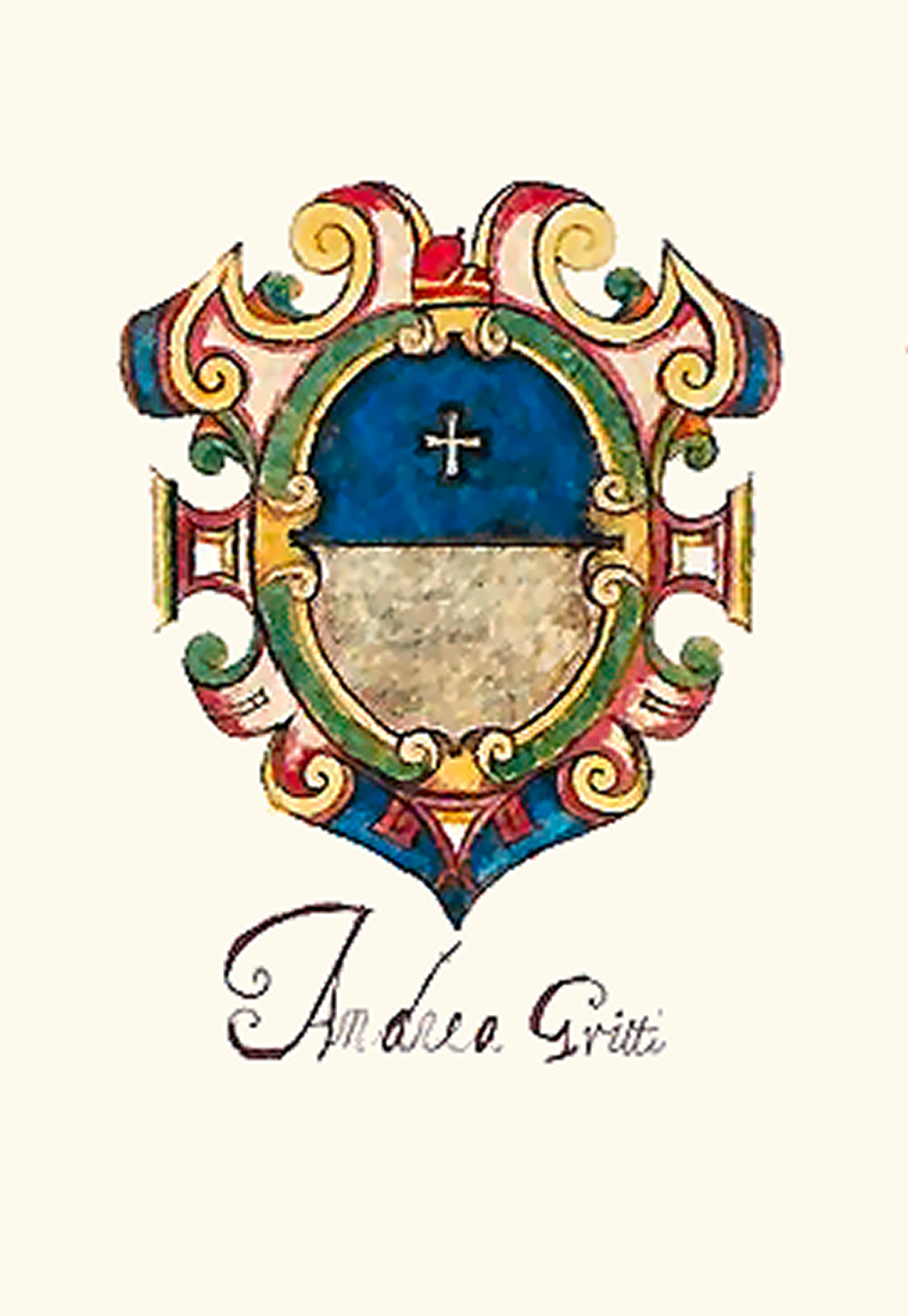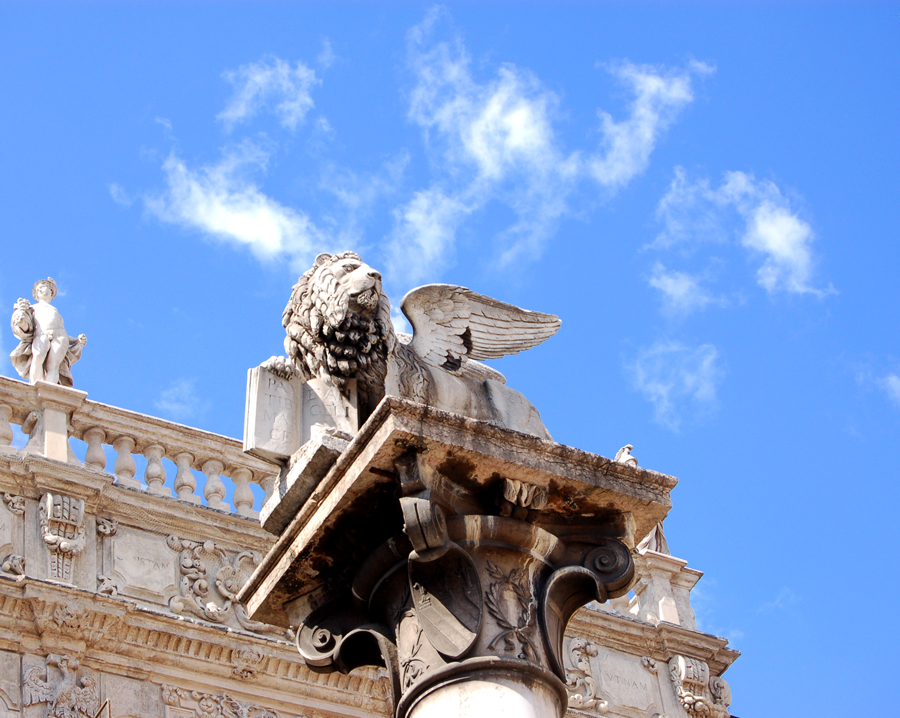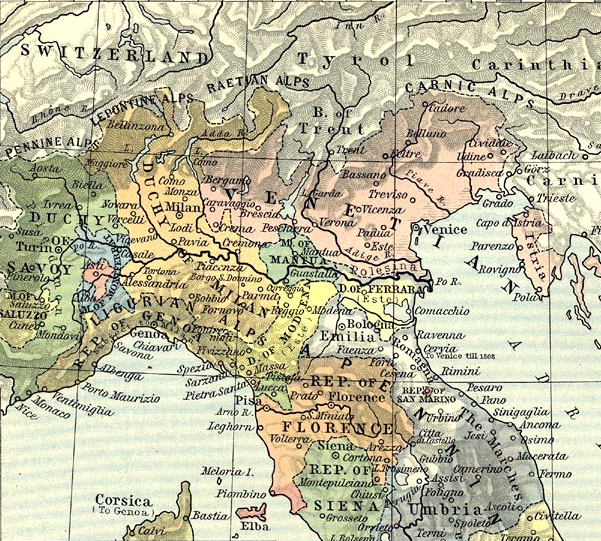|
Andrea Gritti
Andrea Gritti (17 April 1455 – 28 December 1538) was the Doge of the Venetian Republic from 1523 to 1538, following a distinguished diplomatic and military career. He started out as a successful merchant in Constantinople and transitioned into the position of Bailo, a diplomatic role. He was arrested for espionage but was spared execution thanks to his good relationship with the Ottoman vizier. After being freed from imprisonment, he returned to Venice and began his political career. When the War of the League of Cambrai broke out, despite his lack of experience, he was given a leadership role in the Venetian military, where he excelled. After the war, he was elected doge, and he held that post until his death. Early life Andrea Gritti was born on 17 April 1455 in Bardolino, near Verona. His father, Francesco, son of Triadano Gritti, died soon after, and his mother, Vienna, daughter of Paolo Zane, remarried in 1460 to Giacomo Malipiero, with whom she had two more sons, Pa ... [...More Info...] [...Related Items...] OR: [Wikipedia] [Google] [Baidu] |
Portrait Of Doge Andrea Gritti
''Portrait of Doge Andrea Gritti'' is an oil painting by the Venetian master Titian, painted in the late 1540s, which is part of the collection of the National Gallery of Art in Washington, D.C. It is a portrait of Andrea Gritti, who was doge of Venice from 1523 to his death in 1538. A posthumous portrait, it is likely based on earlier depictions of the Doge, including one executed by Titian between 1537 and 1540 for Doge's Palace, Sala del Maggior Consiglio and destroyed during a fire in 1577.Humfrey 2019. Description Gritti is portrayed about down to his hips, wearing the Doge's cap and a robe of State glittering with gold; he gazes attentively to the left with a somewhat severe expression about his firmly-closed mouth.Gronau 1904, p. 73. His clenched hand appears from under his broad sleeve. The play of light on the gold brocade, the broad stripe of white fur lining, the white beard and the gold lace on the ducal cap are used as bits of colour.Gronau 1904, p. 74. The eyes, par ... [...More Info...] [...Related Items...] OR: [Wikipedia] [Google] [Baidu] |
Constantinople
Constantinople (#Names of Constantinople, see other names) was a historical city located on the Bosporus that served as the capital of the Roman Empire, Roman, Byzantine Empire, Byzantine, Latin Empire, Latin, and Ottoman Empire, Ottoman empires between its consecration in 330 until 1930, when it was renamed to Istanbul. Initially as New Rome, Constantinople was founded in 324 during the reign of Constantine the Great on the site of the existing settlement of Byzantium, and shortly thereafter in 330 became the capital of the Roman Empire. Following the collapse of the Western Roman Empire in the late 5th century, Constantinople remained the capital of the Eastern Roman Empire (also known as the Byzantine Empire; 330–1204 and 1261–1453), the Latin Empire (1204–1261), and the Ottoman Empire (1453–1922). Following the Turkish War of Independence, the Turkish capital then moved to Ankara. Although the city had been known as Istanbul since 1453, it was officially renamed as Is ... [...More Info...] [...Related Items...] OR: [Wikipedia] [Google] [Baidu] |
Hersekzade Ahmed Pasha
Hersekzade or Hersekli Ahmed Pasha ("Ahmed Pasha, son of the Herzog"; Serbo-Croatian: ''Ahmed-paša Hercegović''; Aхмед-паша Херцеговић; 1456 – 21 July 1517), born as Stjepan Hercegović, was an Ottoman Bosnian general and five-times grand vizier of the Ottoman Empire. He was the youngest son of the Herceg Stjepan Vukčić. Between late 1473 and early 1474 he departed from Novi (today Herceg Novi) to Istanbul, where he adopted Islam along with the peculiar way of life of the Ottoman court, which made possible his advancement through the Ottoman government and military ranks, eventually occupying top offices of the Empire's government and military as a statesman and navy's grand admiral. Early life Stjepan was born into the Kosača family in 1456. He was third and youngest son of Herceg Stjepan Vukčić, at the time most powerful Bosnian noblemen. Stjepan's half-siblings from his father's first marriage included Queen Katarina, wife of King Stjepa ... [...More Info...] [...Related Items...] OR: [Wikipedia] [Google] [Baidu] |
Grand Vizier
Grand vizier (; ; ) was the title of the effective head of government of many sovereign states in the Islamic world. It was first held by officials in the later Abbasid Caliphate. It was then held in the Ottoman Empire, the Mughal Empire, the Sokoto Caliphate, the Safavid dynasty, Safavid Empire and Morocco, Cherifian Empire of Morocco. In the Ottoman Empire, the grand vizier held the imperial seal and could convene all other viziers to attend to affairs of the state; the viziers in conference were called "''Kubbealtı'' viziers" in reference to their meeting place, the ''Kubbealtı'' ('under the dome') in Topkapı Palace. His offices were located at the Sublime Porte. Today, the Prime Minister of Pakistan is referred to in Urdu as ''Wazir-e-azam'', which translates literally to grand vizier. Initially, the grand viziers were exclusively of Turk origin in the Ottoman Empire. However, after there were troubles between the Turkish grand vizier Çandarlı Halil Pasha the Younger and S ... [...More Info...] [...Related Items...] OR: [Wikipedia] [Google] [Baidu] |
Galata
Galata is the former name of the Karaköy neighbourhood in Istanbul, which is located at the northern shore of the Golden Horn. The district is connected to the historic Fatih district by several bridges that cross the Golden Horn, most notably the Galata Bridge. The medieval citadel of Galata was a colony of the Republic of Genoa between 1273 and 1453. The famous Galata Tower was built by the Genoese in 1348 at the northernmost and highest point of the citadel. Galata is now a quarter within the district of Beyoğlu in Istanbul. Etymology There are several theories concerning the origin of the name ''Galata''. The Greeks believe that the name comes either from ''Galatai'' (meaning "Gauls"), as the Celtic tribe of Gauls ( Galatians) were thought to have camped here during the Hellenistic period before settling into Galatia in central Anatolia; or from ''galatas'' (meaning " milkman"), as the area was used by shepherds for grazing in the Early Medieval (Byzantine) pe ... [...More Info...] [...Related Items...] OR: [Wikipedia] [Google] [Baidu] |
Istanbul
Istanbul is the List of largest cities and towns in Turkey, largest city in Turkey, constituting the country's economic, cultural, and historical heart. With Demographics of Istanbul, a population over , it is home to 18% of the Demographics of Turkey, population of Turkey. Istanbul is among the List of European cities by population within city limits, largest cities in Europe and List of cities proper by population, in the world by population. It is a city on two continents; about two-thirds of its population live in Europe and the rest in Asia. Istanbul straddles the Bosphorus—one of the world's busiest waterways—in northwestern Turkey, between the Sea of Marmara and the Black Sea. Its area of is coterminous with Istanbul Province. Istanbul's climate is Mediterranean climate, Mediterranean. The city now known as Istanbul developed to become one of the most significant cities in history. Byzantium was founded on the Sarayburnu promontory by Greek colonisation, Greek col ... [...More Info...] [...Related Items...] OR: [Wikipedia] [Google] [Baidu] |
Ottoman Empire
The Ottoman Empire (), also called the Turkish Empire, was an empire, imperial realm that controlled much of Southeast Europe, West Asia, and North Africa from the 14th to early 20th centuries; it also controlled parts of southeastern Central Europe, between the early 16th and early 18th centuries. The empire emerged from a Anatolian beyliks, ''beylik'', or principality, founded in northwestern Anatolia in by the Turkoman (ethnonym), Turkoman tribal leader Osman I. His successors Ottoman wars in Europe, conquered much of Anatolia and expanded into the Balkans by the mid-14th century, transforming their petty kingdom into a transcontinental empire. The Ottomans ended the Byzantine Empire with the Fall of Constantinople, conquest of Constantinople in 1453 by Mehmed II. With its capital at History of Istanbul#Ottoman Empire, Constantinople (modern-day Istanbul) and control over a significant portion of the Mediterranean Basin, the Ottoman Empire was at the centre of interacti ... [...More Info...] [...Related Items...] OR: [Wikipedia] [Google] [Baidu] |
University Of Padua
The University of Padua (, UNIPD) is an Italian public research university in Padua, Italy. It was founded in 1222 by a group of students and teachers from the University of Bologna, who previously settled in Vicenza; thus, it is the second-oldest university in Italy, as well as the world's fifth-oldest surviving university. The University of Padua was one of the most prominent universities in early modern Europe, known particularly for the rigor of its Aristotelian logic and science. Together with the University of Bologna, Padua had a central role in the Italian Renaissance, housing and educating a number of Italian Renaissance mathematicians, amongst them Nicolaus Copernicus. , it is made up of 32 departments and eight schools. Padua is part a network of historical research universities known as the Coimbra Group. In 2021, the university had approximately 72,000 students including undergraduates, postgraduates, and doctoral students. History The university is conventionally s ... [...More Info...] [...Related Items...] OR: [Wikipedia] [Google] [Baidu] |
Verona
Verona ( ; ; or ) is a city on the Adige, River Adige in Veneto, Italy, with 255,131 inhabitants. It is one of the seven provincial capitals of the region, and is the largest city Comune, municipality in the region and in Northeast Italy, northeastern Italy. The metropolitan area of Verona covers an area of and has a population of 714,310 inhabitants. It is one of the main tourist destinations in Northern Italy because of its artistic heritage and several annual fairs and shows as well as the Opera, opera season in the Verona Arena, Arena, an ancient Ancient Rome, Roman Amphitheatre, amphitheater. Between the 13th and 14th centuries, the city was ruled by the Scaliger, della Scala family. Under the rule of the family, in particular of Cangrande I della Scala, the city experienced great prosperity, becoming rich and powerful and being surrounded by new walls. The della Scala era is preserved in numerous monuments around Verona. Two of William Shakespeare's plays are set in Ve ... [...More Info...] [...Related Items...] OR: [Wikipedia] [Google] [Baidu] |
San Francesco Della Vigna (Venice) - Choir - Monument To Andrea Gritti
San Francesco della Vigna is a Roman Catholic church in the Sestiere of Castello in Venice, northern Italy. History Along with Santa Maria Gloriosa dei Frari, this is one of two Franciscan churches in Venice. The site, originally a vineyard (''vigna''), was donated by Marco Ziani in 1253 for construction of the monastery. A tiny chapel already on the site recalled the spot where an angel supposedly had pronounced ''Pax tibi Marce, evangelista meus'' to the shipwrecked Saint Mark, patron of Venice. The first church at the site was a triple-nave Gothic church by Marino da Pisa. A monastery housed the Frati Minori dell'Osservanza, while the Conventuali occupied the Frari across town. By the 16th century, the church building was in need of repair. Two main impulses led to the reconstruction of this church; one was the reform sweeping the order of the Franciscan Observants, and the other was the wishes of Doge Andrea Gritti, whose family palace neighboured the church. In 1534, thi ... [...More Info...] [...Related Items...] OR: [Wikipedia] [Google] [Baidu] |
Doge Andrea Gritti
Doge, DoGE or DOGE may refer to: Internet culture * Doge (meme), an Internet meme primarily associated with the Shiba Inu dog breed ** Dogecoin, a cryptocurrency named after the meme ** Kabosu (dog), the dog portrayed in the original Doge image Government Italy * Doge (title), a historical head of state in several Italian city-states, notably: ** Doge of Amalfi ** Doge of Genoa ** Doge of Venice United States * Department of Government Efficiency (DOGE), a United States temporary organization established by Donald Trump for his second term and led by Elon Musk * United States Digital Service (USDS), a technology unit housed within the Executive Office of the President of the United States, renamed in 2025 to "United States DOGE Service" Science * DOGE (database) (in French, ''Documentation en Gestion des Entreprises''), an academic bibliographic database * DOGE-1, planned cubesat mission Other uses * Caffè del Doge, Italian café franchise * Döge, a village in no ... [...More Info...] [...Related Items...] OR: [Wikipedia] [Google] [Baidu] |
War Of The League Of Cambrai
The War of the League of Cambrai, sometimes known as the War of the Holy League and several other names, was fought from February 1508 to December 1516 as part of the Italian Wars of 1494–1559. The main participants of the war, who fought for its entire duration, were Early modern France, France, the Papal States, and the Republic of Venice; they were joined at various times by nearly every significant power in Western Europe, including Spain, the Holy Roman Empire, Kingdom of England, England, the Duchy of Milan, the Republic of Florence, the Duchy of Ferrara, and the Swiss mercenaries, Swiss. The war started with the ''Italienzug'' of Maximilian I, Holy Roman Emperor, Maximilian I, King of the Romans, crossing into Venetian territory in February 1508 with his army on the way to be Coronation of the Holy Roman Emperor, crowned Holy Roman emperor by the pope in Rome. Meanwhile, Pope Julius II, intending to curb Venetian influence in northern History of Italy during foreig ... [...More Info...] [...Related Items...] OR: [Wikipedia] [Google] [Baidu] |






